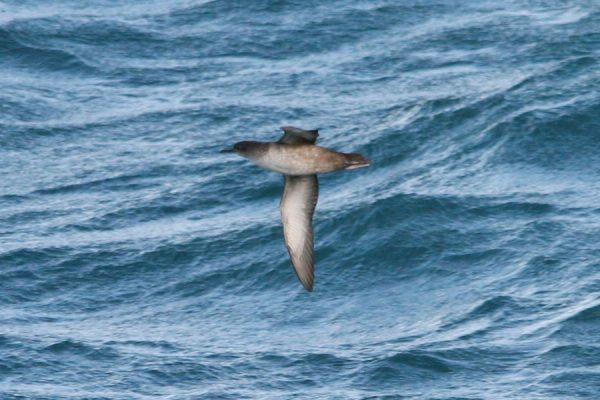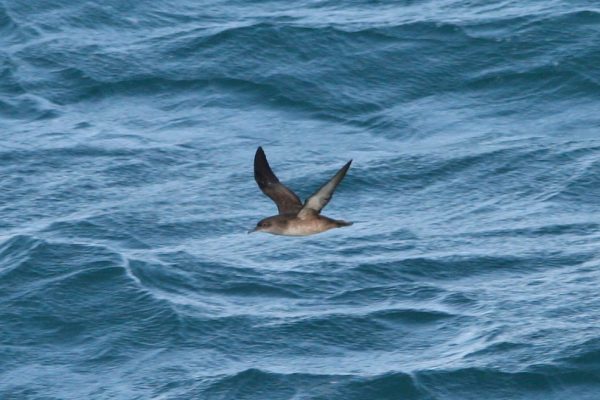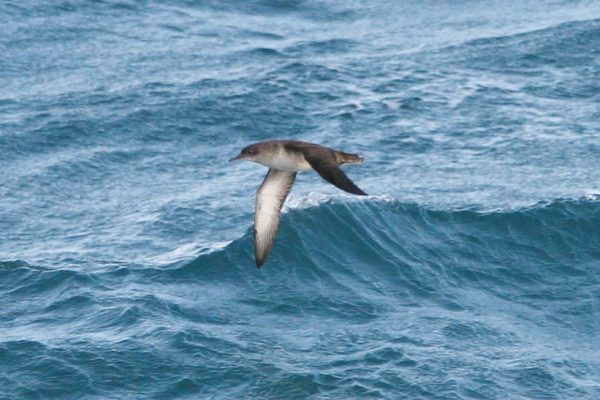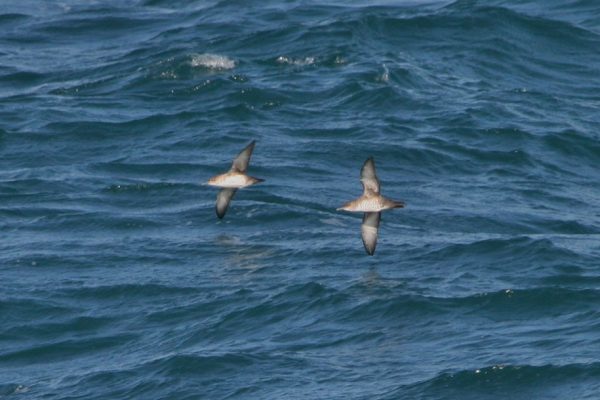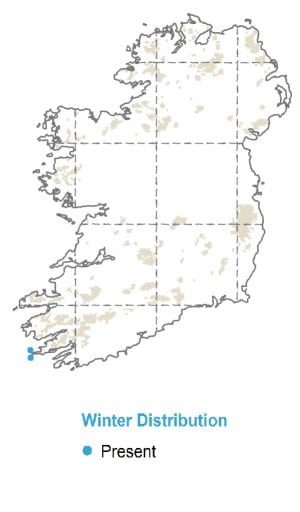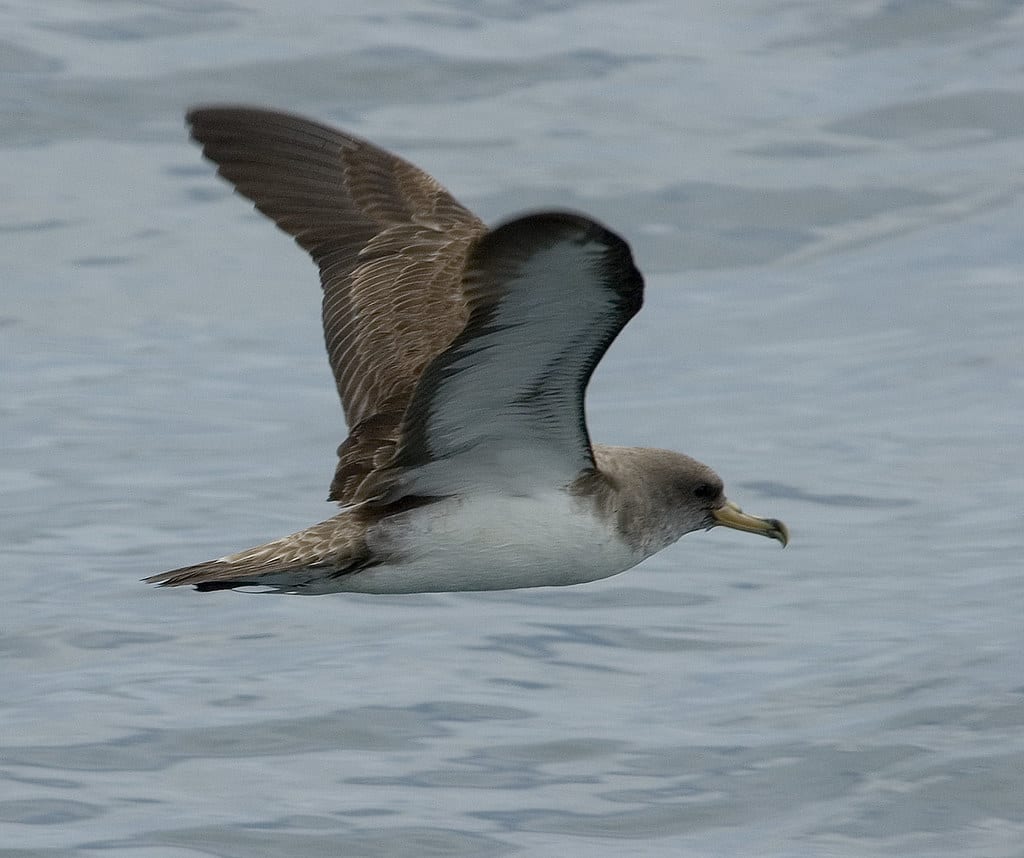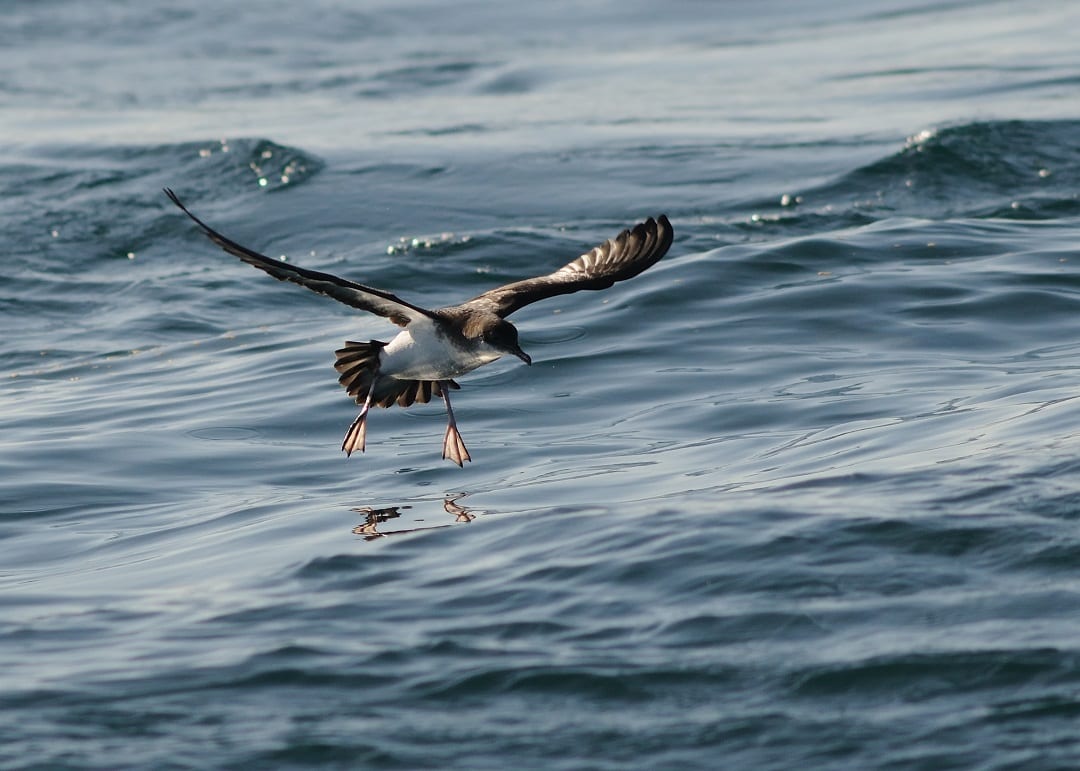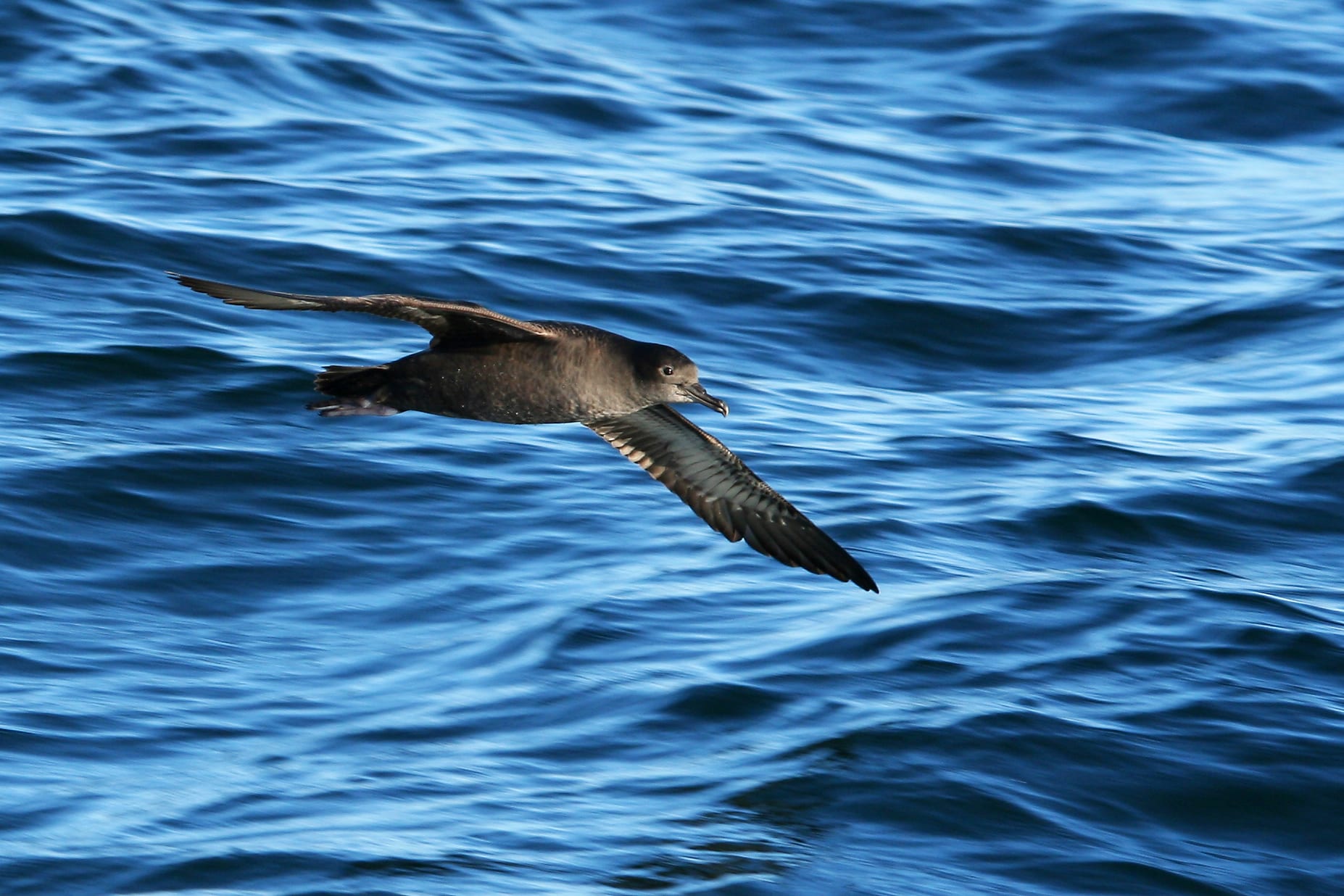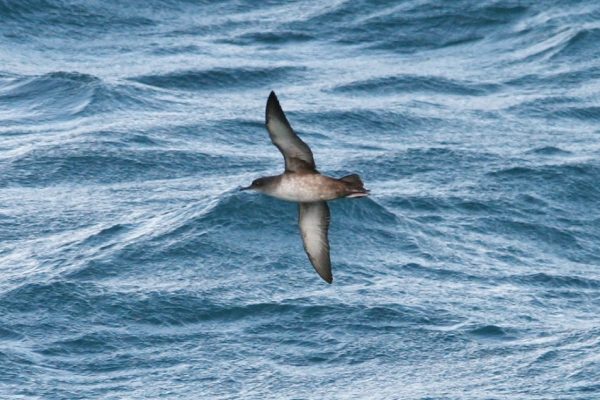
Balearic Shearwater
| Irish Name: | Cánóg Bhailéarach |
| Scientific name: | Puffinus mauretanicus |
| Bird Family: | Tubenoses |
red
Conservation status
Conservation status
Status
Scarce passage migrant off all Irish coasts from July to November. Rare offshore during winter and spring.
Identification
Slightly larger than Manx Shearwater and in all respects very similar to that species. The most noticeable differences include paler brown upperparts, as well as more extensive darker markings on the underparts (throat and vent) and wing. The white on the underparts (belly) tends to appear as an isolated patch. Balearic Shearwaters are a slightly different shape to Manx Shearwater, appearing more like a small Sooty Shearwater. Rarely, Balearic Shearwaters can be as pale as Manx Shearwater or even as dark as Sooty Shearwater.
Voice
Silent on migration.
Diet
Balearic Shearwaters mainly feed on small fish such as Sardines, as well as squid and small crustaceans.
Breeding
The breeding population is confined to the Balearic Islands in the western Mediterranean.
Wintering
On the open ocean of the western Mediterranean and east Atlantic.
Monitored by
SeaTrack.
Blog posts about this bird
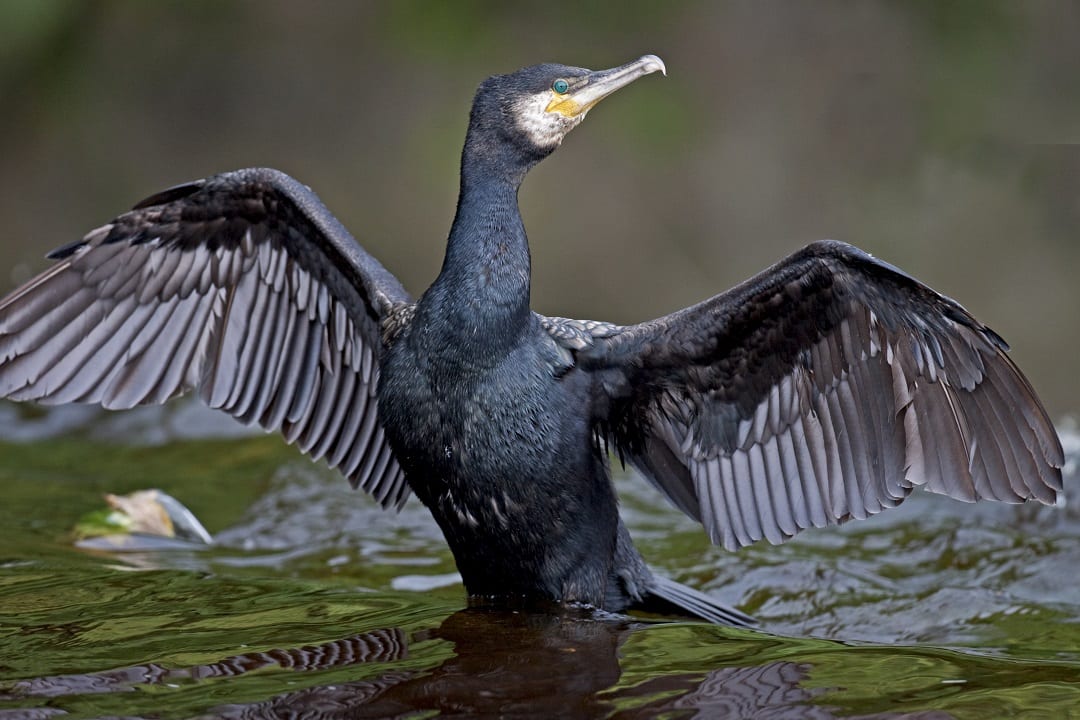
Seabirds of Europe: Report highlights declines and potential solutions
BirdLife International launched a report Seabirds of Europe: Current status, main threats and way forward this summer.
The report finds that over a third of seabirds (38%) in Europe have decreasing trends. One in three species are threatened with extinction according to the latest EU and European IUCN Red List assessments (2020 and 2021 respectively).
Among the most threatened European seabird species are the endemic Balearic Shearwater and the Zino’s Petrel, and species like the Atlantic Puffin are also singled out for their worryingly declining trends. By 2050, the Atlantic Puffin population is projected to decline by 89% across Britain and Ireland.
The seabird groups affected by the most threats overall are terns, medium-sized gulls, Grebes, Cormorants and Loons.


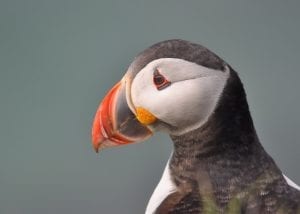
Photo: Puffin. Rónán McLaughlin
What is driving the decline of seabirds? Overfishing, invasive alien species and climate change are the main drivers of decline among seabirds during the breeding season. Climate change impacts, including temperature rise and severe stormy weather, cause increasing harm to seabirds. Other reasons for declines in the EU region include overfishing, hunting, pollution, energy infrastructure, recreational activities, and avian influenza. As the list of threats demonstrates, most seabirds are not just affected by one threat throughout their life cycle, but by multiple threats. The cumulative impact of all these threats therefore needs to be considered when assessing the pressures these animals face and the solutions to holistically conserve them. As part of their lifecycle, seabirds spend time both on land and at sea, and they face some threats only during certain seasons. Threats occurring on land will predominantly affect seabirds during the breeding season, whereas marine threats may affect seabirds throughout the entire year. In Europe, threats occurring in the marine environment have a higher impact on seabirds than threats occurring on land. Pressures from Invasive Alien Species (e.g. predation by rats) is an example of a threat that occurs on land and mostly during the breeding season. Invasives can negatively impact the breeding success of seabird populations, especially on chick survival and egg hatching. Recreational activities are a constant pressure during the entire year for coastal species, such as gulls and terns. For example, beach tourism can cause disturbance to birds as they use extra energy to find new resting and nesting places.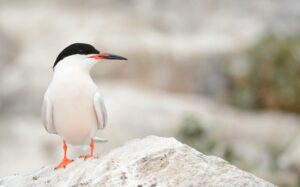
Photo: Roseate Tern. Brian Burke.
Finding solutions Political leaders and decisionmakers already have the solutions to protect vulnerable seabirds, marine species and habitats. The report takes a deep dive into some of them, including:- Eradicating and controlling invasive species
- Reducing bycatch through different types of fishing gear
- Fully implementing the EU Common Fisheries Policy to tackle overfishing
- Establishing Marine Protected Areas (MPAs)

